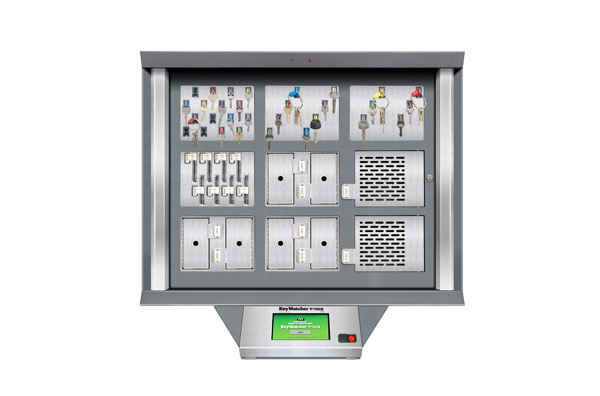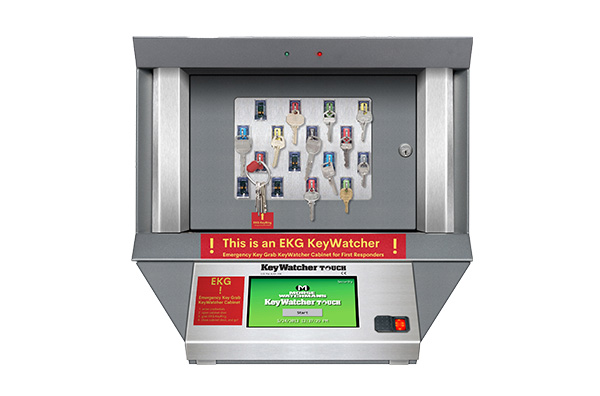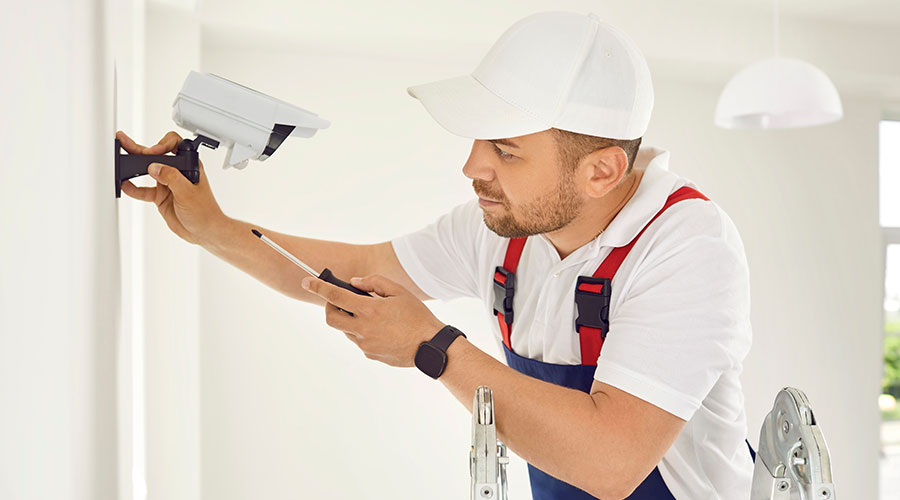SPONSORED
Morse Watchmans, Inc. - Branded Feature
3 Essential Key Control Applications for Facilities Managers
The role of facilities managers involves strategic planning and careful collaboration with security teams, which requires much needed security technology to get maintenance tasks completed on time and within budget. The right tools are needed for the right job, without compromising quality.
Routinely used by both facilities and security departments, hundreds to thousands of mechanical keys exist in every enterprise. Designed to protect assets and provide access control, keys are also assets that need protection with accountability from everyone who uses them. Outdated key management systems with manual sign-out logs and keys mounted on pegboards with labels just do not cut it as far as keeping facilities secure.
With manual sign-out and sign-in methods, keys are often misused or become lost. The lack of key control policies and procedures and the lack of a reliable key control system leads to theft of expensive tools, fleet vehicles, and sabotaged mechanical systems, just to name a few items that affect bottom line profitability and facility operational efficiency.
How Electronic Key Control Works

Electronic key control is a user-friendly security technology that provides security and tracking with accountability for all facility keys within an enterprise. Keys are assigned to authorized users by facilities managers who define customized usage parameters, such as specific days of the week, or work shifts, among other criteria to manage key usage. It is easy to integrate new users instantly, such as temporary employees or contractors, and remove users who have left the business and no longer need facility keys. Keys that are safeguarded and accounted for protect assets within the enterprise.
Authorized users can access only the keys they are allowed to use by entering a PIN code into the system and/or through biometrics or access cards. Once credentials are verified, keys ports light up, and the keys within the lighted ports unlock, making it easy for users to find which keys they are authorized to use. When keys are removed and returned to the key control system, data is recorded by the system’s software, which shows all key transactions and who removed and returned them including dates and times. All recorded key transactions provide audit trail reports, which can be downloaded and printed or emailed at any time needed.
When an electronic key control system is installed at a facility, the master key control plan can be updated to prohibit keys from being taken home by employees. All facility keys must be secured and locked in place when they are done being used. This accountability ensures that keys are always kept on the premises with no exceptions. The key control system keeps track of every user in every department, showing when keys were removed and returned. When keys are not returned on time, alerts are sent to the facilities manager, security manager, department manager, or to all to ensure that keys are returned before allowing employees and contractors to leave the building.
Key Control Applications for Facilities Managers
Electronic key control systems are vital to facilities and security operations managers. Instead of keys getting lost or stolen, key control systems do the work keeping track of all keys. Here are three applications that key control systems perform to increase productivity and security for facilities managers:
- Access Control for Contractors – For contractors and temporary employees, electronic key control systems store all the keys that can be temporarily assigned to them. Facilities managers are often busy providing access to areas of the facility for contractors, and at times need to be in multiple places at once. Key control solutions prove effective in saving facilities managers time while boosting productivity by granting permissions to contractors to access their specific keys. The key control system is there 24 and 7 to dispense keys, empowering contractors to be able to access the areas of the facility anytime needed to perform their jobs, rather than hunt down who has the keys. This is especially helpful when key control administrators are out sick or on vacation, or off premises at another site for the day. At the end of the day, contractors return their keys and go home, and the keys are ready again for them the next day.
All contractors’ key usage is tracked through the systems’ audit trail. Alerts can be sent to facilities managers if contractors attempt to leave the building without returning the keys. This ensures a secure key tracking system with accountability for facilities managers who are supervising outside contractors.
- Crisis and Emergency Response – Within every enterprise, facilities departments and security and safety departments must prepare for unforeseen emergencies, such as weather-related events, active intruders, mechanical and electrical system failures, fires, medical episodes, and trauma. When facilities management and security management teams prepare for emergency management, key control for first responders is essential to include in the drill.
During emergencies, locked doors present potential hazards and hinder first responder response times if they are unable to unlock doors where people need to be rescued. Often, keys are missing or not easily obtained during a crisis, where a key control administrator may not be immediately available. Preparing a set of master keys within a key control system to be used exclusively by first responders is a remedy for eliminating barriers to rapid response times. Access cards provided to first responder teams for the system can be programmed ahead of time, providing the necessary keys needed for response and rescue.

- Facilities Operational Efficiency – Key management for multiple departments can be complex without an electronic key control system. With electronic key control, facilities managers can easily authorize and assign staff from various departments to access specific keys. When authorized key users are out of the office or out sick, and another employee needs a key, facilities managers can remotely authorize access to the key control system for an individual rather than having to be there in person to grant permission to use a key, which saves time and increases productivity. Multiple copies of keys are no longer necessary, thus saving money by not having to get them duplicated. The key control system keeps all facility keys secured with an efficient process for removing and returning them. Keys no longer go missing, which significantly reduces the risk of theft.
Keeping Up with Facility Upkeep
Facilities managers are always striving for increased efficiency and to keep enterprises operational, safe, and secure. The infrastructure of the enterprise is subject to regular inspections to ensure that the business is meeting compliance and regulatory standards. When the building is in disrepair, the enterprise is subject to fees and sanctions until repairs are completed.
Keys to mechanical rooms and tool storage areas must always be secured to safeguard against the risk of insider or outsider theft and vandalism, and the costly expenses that precipitate from such incidents. Tools and fleet vehicles are expensive to replace. Investing in a key control system secures all assets while preventing access to them. Losing keys also requires replacing the locks and purging the old keys from the premises. Rekeying costs can be thousands to millions of dollars and is one major pain point that facilities managers try to avoid.
Key control systems enhance security and help facilities managers keep up with infrastructure repairs and maintenance. When keys no longer go missing, fewer security incidents occur, keeping compliance fees and insurance premiums to a minimum.
Enhanced Security Through Integration
Key control systems can be integrated with other facility security systems, such as access control or video surveillance. Integrating key control systems with access control and video surveillance systems and synchronizing the data between the systems provides a big picture to facilities and security managers in actual time. Safety is enhanced when all security systems are working together, and when keys are secured and protected through electronic key control, people and assets are protected as well. Key control systems increase productivity, accountability and profitability and are an important part of a suite of security products that help facilities managers run maintenance and business operations smoothly.
Global Key Control Solutions for Facilities Managers

The ongoing functionality of key control systems is to protect assets and provide access control. For facilities managers, it is a strategic investment that grows with the infrastructure of an enterprise.
KeyWatcher systems from Morse Watchmans are modular, scalable and expandable, which makes it easy to customize and right-size a system for any enterprise. As an enterprise grows and changes, it is easy to install add-on cabinets or set up networked cabinets in multiple locations or multiple buildings.
Additionally, key control systems can be set up over a wide area network (WAN) for efficient and streamlined and consistent facilities management across satellite locations in multiple cities or abroad. Secure and creative solutions and possibilities abound for efficient facilities management and key control.
Besides safeguarding people, places, and assets, the role of key control is to maximize building operations efficiencies, while reducing security incidents. The future of key control for facilities management teams begins with the KeyWatcher electronic key control systems of today.
Learn more about Key Control with these Guidelines










